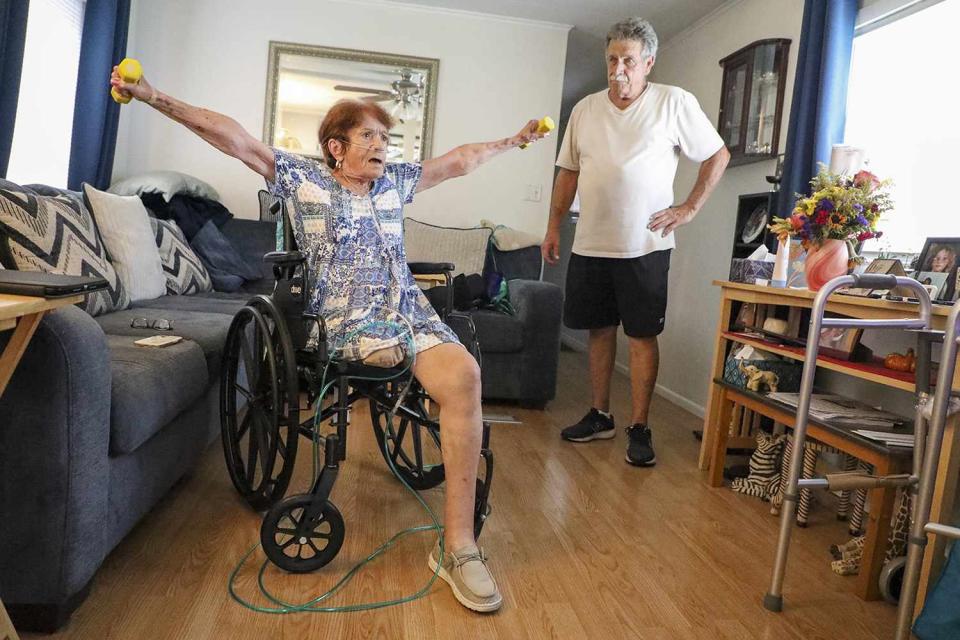Florida Woman’s Leg Amputated After Minor Scrape Leads to Flesh-Eating Bacteria: 'The Flesh Was Gone, It Was Just Bone'
Debbie King, 72, had her leg amputated after contracting a flesh-eating bacteria called Vibrio vulnificus

Douglas R. Clifford/Tampa Bay Times via ZUMA Press Wire
Debbie King after her leg amputationA Florida woman had her leg amputated after a scrape led to her contracting a flesh-eating bacteria called Vibrio vulnificus — which doctors said can be found in salt and fresh waters.
On August 13, Debbie King was swimming in the Gulf of Mexico when she scraped her shin climbing back onto her friend’s boat. Although she bandaged the cut, the 72-year-old noticed her leg was red and sore the following day but brushed the symptoms off as sunburn, the Tampa Bay Times reports.
Within three days, King was in the emergency room after the red, blistered area had spread.
Related: Mom of 6-Year-Old Has Limbs Amputated After Eating Tilapia Contaminated with Flesh-Eating Bacteria
She was taken to HCA Florida Citrus Hospital and rushed into surgery after doctors confirmed the infection was Vibrio vulnificus, a severe infection in which the flesh around an open wound dies.
During surgery, King’s surgeon told her husband Jim that if they didn’t amputate her leg, she'd probably die. Her leg was amputated above the knee and she spent the following four days in the intensive care unit.
“The flesh was gone; it was just bone,” King told the outlet of her leg.
Never miss a story — sign up for PEOPLE's free daily newsletter to stay up-to-date on the best of what PEOPLE has to offer, from celebrity news to compelling human interest stories.

GoFundMe
Debbie King and her husbandVibrio is a bacterial infection that people can contract after exposing a wound to salt water or brackish water or after consuming raw or undercooked seafood — particularly oysters — according to the Center for Disease Control and Prevention.
Vibriosis is not typically deadly. It causes just about 100 deaths in the U.S. each year and 80,000 illnesses. Most infections occur from May through October when water temperatures are warmer.
After King’s amputation, doctors discovered that her infection had spread more than they thought.
She was diagnosed with sepsis — a frightening condition caused when the body has an extreme, over-active, life-threatening response to an infection — and spent 4 days in the ICU.
King, a former radiation protection technician, has since been recovering through physical therapy. She had always been independent and told the outlet that relying on a wheelchair or assistance from others felt like a loss of identity.
Related: 3 Dead, 1 Hospitalized from Flesh-Eating Bacteria Found in Raw Oysters and Saltwater

Getty Images
Vibrio vulnificusShe said her leg amputation didn’t even really sink in until she was transferred to a rehabilitation facility, where she recalled spending one morning crying uncontrollably.
“It hit me like a ton of bricks,” she said.
King admitted that she was finally able to accept her new reality after working with the hospital’s consulting psychologist, Gerald Todoroff, who told her that “amputation is not who you are but what you will learn to deal with,” and that her life “can be as full as you wish.”
“They were magic words that made me feel like a new person,” King said. “They went through me like music.”
King has since made progress in her recovery journey and hopes to walk again with a prosthetic leg. After nicknaming her “stump” Peg, she is now comfortable sharing her story, hoping to teach others about the risk of flesh-eating bacteria.
“This is the most horrific thing that can happen to anybody,” she said. “But I’d sit back and think, ‘God put you here for a reason — you’ve got more things to do.’”
For more People news, make sure to sign up for our newsletter!
Read the original article on People.

